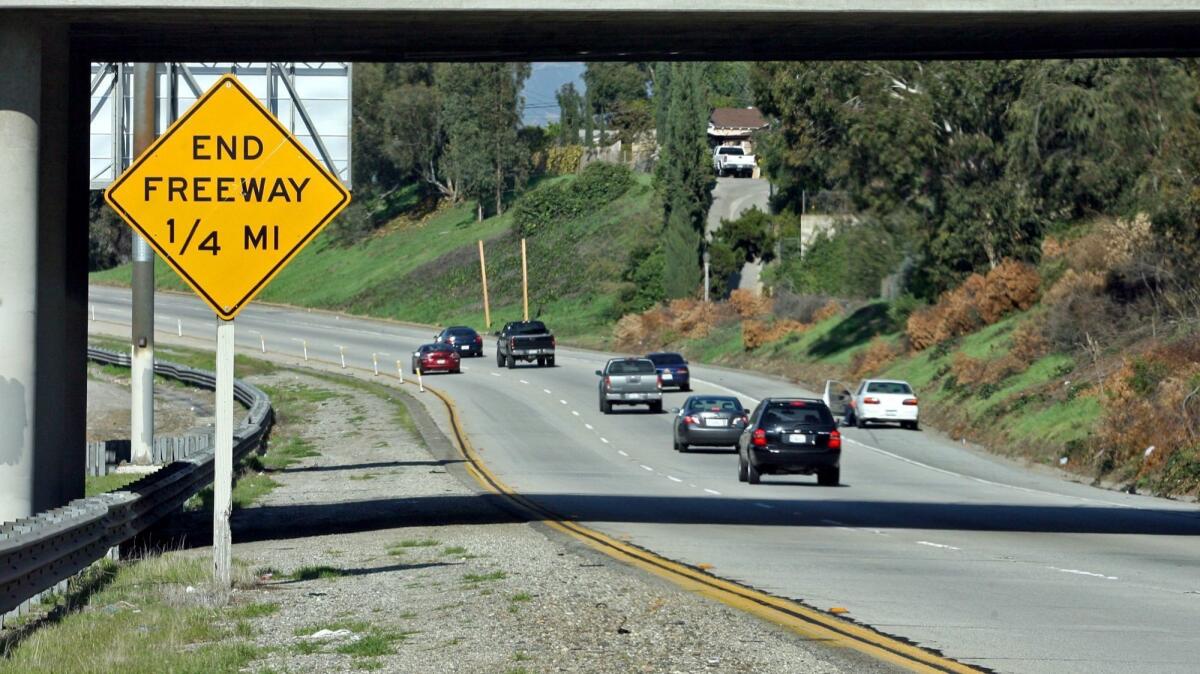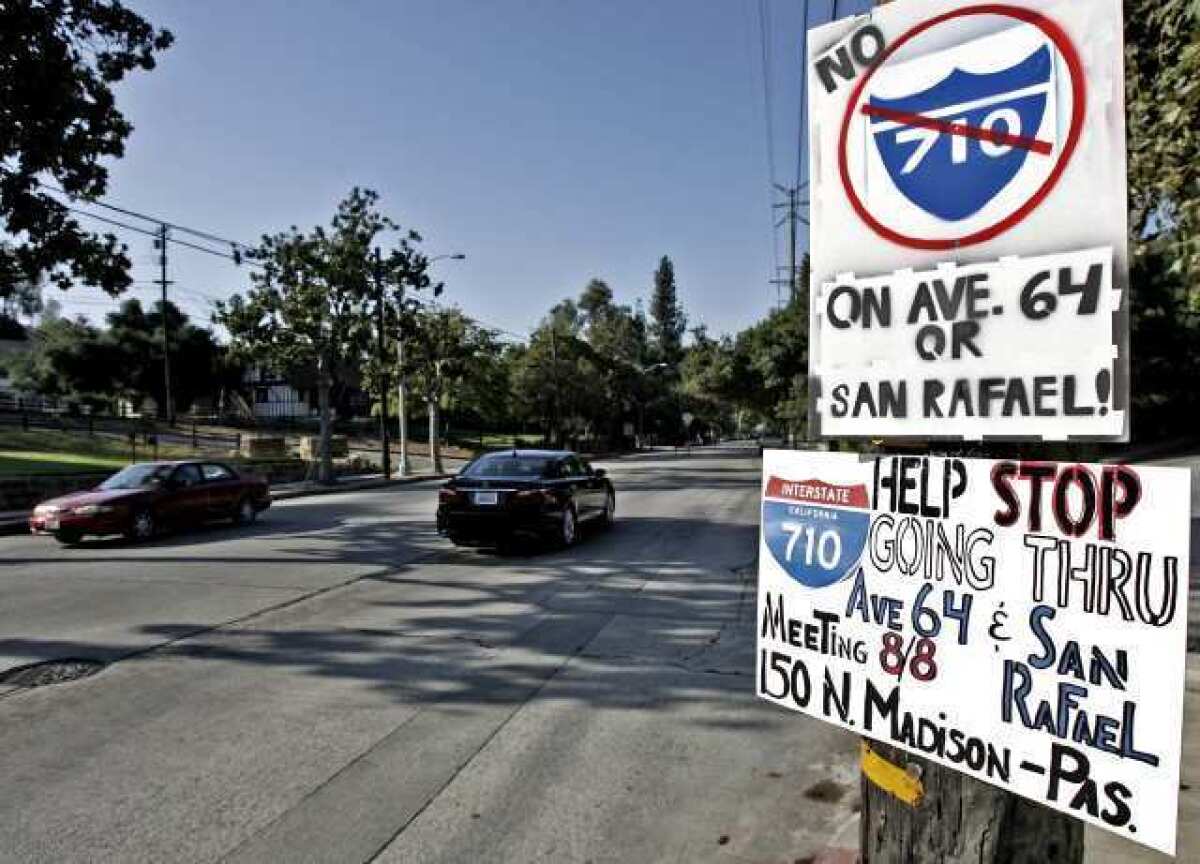The battle over completing the 710 Freeway is heating up again, with a long tunnel in the mix
- Share via
Closing “the gap” of the 710 Freeway in the San Gabriel Valley is one of the ugliest and longest running transportation battles in Southern California.
For years, Caltrans wanted to complete the freeway but faced heated opposition from residents. Now, there is a proposal to finish the 710 as a tunnel. That plan has also faced wide criticism.
A 4.9-mile-long tunnel would be longer than any other in California for auto traffic. It is expected to cost at least $5.4 billion.
Here are the latest developments:

Study says tunnel is the best solution
A Metropolitan Transportation Authority report studying the benefits and impacts of the proposal to connect the Long Beach (710) Freeway to the Foothill (210) Freeway concluded last week that a freeway tunnel is the preferred alternative to address projected traffic congestion in the area.
The May 10 report advocating a single-bore freeway tunnel was a status update to the State Route 710 North Project environmental process, which examined various alternatives to improve transit with the fewest negative impacts in an area that extends more than 100 square miles to include East Los Angeles and the west San Gabriel Valley.
“Studies completed over the past few years clearly capture the mobility benefits included in the Single Bore Freeway Tunnel, with tolls and truck restrictions,” the MTA report said. “This alternative reduces regional and local congestion… and delivers the best transportation performance.”
The study is the latest update on a joint effort by Metro and Caltrans that began in 2011 to review the environmental impacts of a possible 4.5-mile 710 Freeway tunnel that is expected to carry a price tag of at least $5.6 billion, alongside four alternate scenarios including the expansion of rapid transit systems and bus lines, and a series of systemic traffic improvements.

Officials have other ideas
On Wednesday morning, Metro staff presented an update to the Metro Board of Directors Ad-Hoc Congestion, Highway and Roads Committee. The five-member committee passed by 3-2 a motion submitted by MTA Board Chairman John Fasana, which instead recommends adopting the Traffic Systems Management/Traffic Demand Management alternative — designed to upgrade local street systems. Jacquelyn Dupont-Walker and Janice Hahn had the dissenting votes.
Glendale Councilman Ara Najarian, who represents the North County/San Fernando Valley sector on the MTA board and is vice chairman of the ad hoc committee, has opposed the 710 tunnel proposal since its inception. He said the Fasana motion is a clear statement of the intent of the MTA board not to fund any money for the tunnel.
“It’s the first time any motion passed that could potentially kill the tunnel if this recommendation is adopted by the full board,” Najarian said. “The motion represents the capitulation the San Gabriel Valley representative, Fasana, to give up on this whole tunnel advocacy.”

Familiar battle lines over tunnel
Critics of the tunnel proposal include the cities of Glendale, La Cañada Flintridge, San Marino, Sierra Madre, Pasadena and South Pasadena, all of which cite concerns over health, cost and sustainability.
Those municipalities had proposed “greener” alternatives such as rapid transit upgrades, improved bus services and free transit passes for area students.
Alhambra and Monterey Park have been the most outspoken supporters of the extension, along with a group known as the 710 Coalition, whose members said last week’s Metro status update “validates” the coalition’s position.
“The people in our city and the San Gabriel Valley have suffered enough from the traffic and population increasing, so obviously I’m going to support [the 710 tunnel],” said Alhambra Mayor Dave Mejia.

What’s next
Both the status update and the Fasana motion will head to the May 25 Metro board meeting for consideration. The motion requires votes by seven of the 13 board members to pass.
Landa writes for the Glendale News-Press.
Sign up for Essential California
The most important California stories and recommendations in your inbox every morning.
You may occasionally receive promotional content from the Los Angeles Times.








